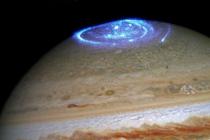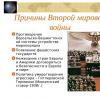Astrophysicists from Canada claim that the mass of the stream of meteorites bombarding our long-suffering planet exceeds 21 tons per year. But in most cases this goes unnoticed, since a person can observe and find meteorites only in the habitable zone.
The share of land on the Earth's surface is only 29%; the rest of the planet is occupied by the World Ocean. But even from this 29% it is necessary to take away places that are not inhabited by humans or are completely unsuitable for habitation. Therefore, finding a meteorite is a great success. However, there was a case when a meteorite itself found a person.
The case of a meteorite colliding with a person
In the entire history of celestial bodies falling to Earth, only one officially documented case of direct contact of a meteorite with a person is known.
It happened in the USA on November 30, 1954. A four-kilogram meteorite broke through the roof of a house and injured the owner’s leg. This means that there is still a risk that a more serious guest from outer space could fall on people’s heads. I wonder what the largest meteorite fell on our planet?
Meteorites are divided into three categories: stony, stony-iron and iron. And each of these categories has its own giants.
The largest stone meteorite
Relatively recently, on March 8, 1976, space presented the Chinese with a gift in the form of stones falling to the surface of the earth for 37 minutes. One of the fallen specimens weighed 1.77 tons. It was the largest meteorite to fall to earth with the structure of a rock. The incident occurred near the Chinese province of Jilin. The space guest received the same name.
To this day, the Jilin meteorite remains the largest rock meteorite discovered on earth.
Largest ironstone meteorite
The largest representative of the category of iron-stone meteorites weighed 1.5 tons. It was found in 1805 in Germany.
A fellow German meteorite, found in Australia, weighed only 100 kg less than the German one.
But everyone was surpassed by the iron guest from outer space, whose weight was tens of times greater than all previously found meteorites.
Largest iron meteorite

In 1920, an iron meteorite with a diameter of 2.7 meters and weighing over 66 tons was discovered in southwestern Namibia! A larger specimen than this has never been found on our planet. It turned out to be the largest meteorite to fall to Earth. It was named after the Goba West farm, whose owner came across it while cultivating a field. The approximate age of the iron block is 80 thousand years.
Today it is the largest solid block of natural iron.

In 1955, the largest meteorite that fell to earth, Goba, was declared a national monument and taken under state protection. This was a necessary measure, since over the 35 years that the meteorite was in the public domain, it lost 6 tons in mass. Part of the weight was lost as a result of natural processes - erosion. But numerous tourists made the main contribution to the “weight loss” process. Now you can approach the celestial body only under supervision and for a fee.

The meteorites mentioned above are, of course, the largest in their category ever discovered. But the question of which largest meteorite fell to earth remained open.
The meteorite that killed the dinosaurs
Everyone knows the sad story of the extinction of dinosaurs. Scientists are still arguing about the cause of their death, but the version that a meteorite was the culprit of the tragedy remains the main one.
According to scientists, 65 million years ago the Earth was hit by a huge meteorite, which caused a catastrophe on a planetary scale. The meteorite fell on the territory that now belongs to Mexico - the Yucotan Peninsula, near the village of Chicxulub. Evidence of this fall was the impact crater found in 1970. But since the depression was filled with sedimentary rocks, they did not carefully examine the meteorite. And only 20 years later scientists returned to study it.

As a result of the work, it turned out that the crater left by the meteorite has a diameter of 180 km. The diameter of the meteorite itself was about 10 km. The impact energy during the fall was 100,000 Gtv (this is comparable to the simultaneous explosion of 2,000,000 of the largest thermonuclear charges).
It is assumed that a tsunami was formed as a result of the meteorite impact, the wave height varied from 50 to 100 meters. The dust particles raised during the impact tightly blocked the Earth from the Sun for several years, which led to a sharp climate change. and periodic large-scale fires aggravated the situation. An analogue of nuclear winter has arrived on the planet. As a result of the disaster, 75% of animal and plant species became extinct.
Nevertheless, officially the Chicxulub meteorite is the largest meteorite that fell to earth 65 million years ago. He practically destroyed all life on the planet. But in history it ranks only third in size.
First among the giants
Presumably 2 billion years ago, a meteorite fell on Earth, leaving a mark 300 km in diameter on its surface. The meteorite itself supposedly had a diameter of more than 15 km.
The crater left after the fall is located in South Africa, in the Free State province, and is called Vredefort. This is the largest impact crater, and was left by the largest meteorite that fell to Earth in the entire history of our planet. In 2005, the Vredefort Crater was listed as a UNESCO World Heritage Site. The largest meteorite that fell to Earth did not leave a photo as a souvenir, but a huge scar in the form of a crater on the surface of our planet will not allow us to forget about it.

It has been noticed that the fall of meteorites, the size of which is measured at least tens of meters, occurs with a periodicity of hundreds of years. And larger meteorites fall even less frequently.
According to scientists, a new guest wants to visit Earth in 2029.
Meteorite named Apophis
The meteorite that threatens our planet was named Apophis (that was the name of the snake god, who was the antipode of the sun god Ra in Ancient Egypt). It is not known for certain whether it will fall to Earth or miss and pass near the planet. But what happens if a collision does occur?
Scenario of Apophis colliding with Earth
So, it is known that the diameter of Apophis is only 320 meters. When it falls to Earth, there will be an explosion equal in power to 15,000 bombs dropped on Hiroshima.

If Apophis hits the mainland, an impact crater will appear, having a depth of 400-500 meters and a diameter of up to 5 km. The resulting explosion will destroy permanent structures at a distance of 50 km from the epicenter. Buildings that do not have the strength of a brick house will be destroyed at a distance of 100-150 km. The column of dust will rise to a height of several kilometers and then cover the entire planet.
Stories spread by the media about nuclear winter and the end of the world are too exaggerated. The size of the meteorite is too small for such consequences. The temperature may drop by 1-2 degrees, but after six months it will return to normal. That is, the predicted catastrophe, if it does happen, will be far from global.
If Apophis falls into the ocean, which is more likely, a tsunami will occur that will cover coastal areas. The height of the wave will depend on the distance between the shore and the location of the meteorite fall. The initial wave can be up to 500 meters high, but if Apophis falls in the center of the ocean, then the wave reaching the shore will not exceed 10-20 meters. Although this is also quite serious. The storm will continue for several hours. All these events should be considered only as possible with some degree of probability. So will Apophis collide with our planet or not?
The probability of Apophis falling to Earth
Apophis will theoretically threaten our planet twice. The first time - in 2029, and then - in 2036. After conducting observations using radar installations, a group of scientists completely ruled out the possibility of a meteorite colliding with the earth. As for 2036, today the chance of a meteorite colliding with the Earth is 1:250,000. And every year, as the accuracy of calculations increases, the probability of a collision decreases.
But even with this probability, various options for forcing Apophis to deviate from course are being considered. Apophis is thus an object of interest rather than threat.
In conclusion, I would like to note that meteorites are severely destroyed when entering the earth’s atmosphere. When approaching the Earth, the speed of the fall of guests from space is 10-70 km/sec, and upon contact with a gaseous atmosphere, which has a fairly high density, the temperature of the meteorite increases to critical, and it simply burns up or is very badly destroyed. Thus, the atmosphere of our planet is the best protector against uninvited guests.
We highly recommend meeting him. There you will find many new friends. In addition, this is the fastest and most effective way to contact project administrators. The Antivirus Updates section continues to work - always up-to-date free updates for Dr Web and NOD. Didn't have time to read something? The full contents of the ticker can be found at this link.
Consequences of meteorites of various diameters falling to the ground
The previous post assessed the danger of an asteroid threat from space. And here we will consider what will happen if (when) a meteorite of one or another size does fall to Earth.
Meteor shower over Paris
The scenario and consequences of such an event as the fall of a cosmic body to Earth, of course, depends on many factors. Let's list the main ones:
Space body size
This factor, naturally, is of primary importance. Armageddon on our planet can be caused by a meteorite 20 kilometers in size, so in this post we will consider scenarios for the fall of cosmic bodies on the planet ranging in size from a speck of dust to 15-20 km. More - there is no point, since in this case the scenario will be simple and obvious.
Compound
Small bodies of the Solar System can have different compositions and densities. Therefore, there is a difference whether a stone or iron meteorite falls to Earth, or a loose comet core consisting of ice and snow. Accordingly, in order to cause the same destruction, the comet nucleus must be two to three times larger than an asteroid fragment (at the same falling speed).
For reference: more than 90 percent of all meteorites are stone.
Speed
Also a very important factor when bodies collide. After all, here the transition of kinetic energy of motion into heat occurs. And the speed at which cosmic bodies enter the atmosphere can vary significantly (from approximately 12 km/s to 73 km/s, for comets - even more).
The slowest meteorites are those that catch up with the Earth or are overtaken by it. Accordingly, those flying towards us will add their speed to the orbital speed of the Earth, pass through the atmosphere much faster, and the explosion from their impact on the surface will be many times more powerful.
Where will it fall
At sea or on land. It is difficult to say in which case the destruction will be greater, it will just be different.
A meteorite may fall on a nuclear weapons storage site or a nuclear power plant, then the environmental damage may be greater from radioactive contamination than from the meteorite impact (if it was relatively small).
Angle of incidence
Doesn't play a big role. At those enormous speeds at which a cosmic body crashes into a planet, it does not matter at what angle it will fall, since in any case the kinetic energy of movement will turn into thermal energy and be released in the form of an explosion. This energy does not depend on the angle of incidence, but only on mass and speed. Therefore, by the way, all craters (on the Moon, for example) have a circular shape, and there are no craters in the form of trenches drilled at an acute angle.
How do bodies of different diameters behave when falling to Earth?
Up to several centimeters
They completely burn up in the atmosphere, leaving a bright trail several tens of kilometers long (a well-known phenomenon called meteor). The largest of them reach altitudes of 40-60 km, but most of these “specks of dust” burn up at altitudes of more than 80 km.

Lyrid meteor shower photo 2009
Mass phenomenon - within just 1 hour, millions (!!) of meteors flash in the atmosphere. But, taking into account the brightness of the flashes and the observer’s viewing radius, at night in one hour you can see from several to dozens of meteors (during meteor showers - more than a hundred). Over the course of a day, the mass of dust from meteors deposited on the surface of our planet is calculated in hundreds and even thousands of tons.
From centimeters to several meters
Fireballs- the brightest meteors, the brightness of the flash exceeds the brightness of the planet Venus. The flash may be accompanied by noise effects, including the sound of an explosion. After this, a trail of smoke remains in the sky.
Fragments of cosmic bodies of this size reach the surface of our planet. It happens like this:
- a meteoroid crashes into the Earth's atmosphere (altitude about 120 km);
- almost immediately it heats up to the glow temperature, its speed gradually decreases;
- falling, the body collects more and more air molecules in front of itself, that is, it creates a zone of increased pressure;
- if at some point the flying cobblestone cannot withstand the pressure it creates, then an explosion occurs;
- at an altitude of several kilometers, the cosmic velocity of the body or its fragments is completely extinguished and what remains simply begins to fall, obeying the force of gravity.

Bolide in the atmosphere
At the same time, stone meteoroids, and especially ice ones, are usually crushed into fragments due to explosion and heating. Metal ones can withstand pressure and fall onto the surface entirely:

Iron meteorite "Goba" measuring about 3 meters, which fell "entirely" 80 thousand years ago on the territory of modern Namibia (Africa)
If the speed of entry into the atmosphere was very high (oncoming trajectory), then such meteoroids have much less chance of reaching the surface, since the force of their friction with the atmosphere will be much greater. The number of fragments into which a meteoroid is crushed can reach hundreds of thousands; the process of their falling is called meteor shower.
Over the course of a day, several dozen small (about 100 grams) fragments of meteorites can fall to Earth in the form of cosmic fallout. Considering that most of them fall into the ocean, and in general, they are difficult to distinguish from ordinary stones, they are found quite rarely.
The number of times cosmic bodies about a meter in size enter our atmosphere is several times a year. If you are lucky and the fall of such a body is noticed, there is a chance to find decent fragments weighing hundreds of grams, or even kilograms.
17 meters - Chelyabinsk bolide
Superbolide is the name sometimes given to particularly powerful meteoroid explosions, like the one that exploded in February 2013 over Chelyabinsk. The initial size of the body that then entered the atmosphere varies according to various expert estimates, on average it is estimated at 17 meters. Weight - about 10,000 tons.

Chebarkul meteorite
The object entered the Earth's atmosphere at a very acute angle (15-20°) at a speed of about 20 km/sec. It exploded half a minute later at an altitude of about 20 km. The power of the explosion was several hundred kilotons of TNT. This is 20 times more powerful than the Hiroshima bomb, but here the consequences were not so fatal because the explosion occurred at a high altitude and the energy was dispersed over a large area, largely away from populated areas.
Less than a tenth of the meteoroid's original mass reached Earth, that is, about a ton or less. The fragments were scattered over an area more than 100 km long and about 20 km wide. Many small fragments were found, several weighing kilograms, the largest piece weighing 650 kg was recovered from the bottom of Lake Chebarkul:

The largest fragment of the Chebarkul (Chelyabinsk) meteorite found, weight 650 kg
Damage: Almost 5,000 buildings were damaged (mostly broken glass and frames), and about 1.5 thousand people were injured by glass fragments.

Broken windows of houses - consequences of a meteorite fall near Chelyabinsk
A body of this size could easily reach the surface without breaking into fragments. This did not happen due to the too acute angle of entry, because before exploding, the meteoroid flew several hundred kilometers in the atmosphere. If the Chelyabinsk meteoroid had fallen vertically, then instead of an air shock wave breaking the glass, there would have been a powerful impact on the surface, resulting in a seismic shock, with the formation of a crater with a diameter of 200-300 meters. In this case, judge for yourself about the damage and number of victims; everything would depend on the location of the fall.
Concerning repetition rates similar events, then after the Tunguska meteorite of 1908, this is the largest celestial body to fall to Earth. That is, in one century we can expect one or several such guests from outer space.
Tens of meters - small asteroids
The children's toys are over, let's move on to more serious things.
If you read the previous post, then you know that small bodies of the solar system up to 30 meters in size are called meteoroids, more than 30 meters - asteroids.
If an asteroid, even the smallest one, meets the Earth, then it will definitely not fall apart in the atmosphere and its speed will not slow down to the speed of free fall, as happens with meteoroids. All the enormous energy of its movement will be released in the form of an explosion - that is, it will turn into thermal energy, which will melt the asteroid itself, and mechanical energy, which will create a crater, scatter earthly rock and fragments of the asteroid itself, and also create a seismic wave.
To quantify the scale of such a phenomenon, we can consider, for example, the asteroid crater in Arizona:

This crater was formed 50 thousand years ago by the impact of an iron asteroid with a diameter of 50-60 meters. The force of the explosion was 8000 Hiroshima, the diameter of the crater was 1.2 km, the depth was 200 meters, the edges rose 40 meters above the surrounding surface.
Another comparable event in scale is the Tunguska meteorite. The power of the explosion was 3000 Hiroshima, but here there was a fall of a small comet nucleus with a diameter of tens to hundreds of meters, according to various estimates. Comet nuclei are often compared to dirty snow cakes, so in this case no crater appeared, the comet exploded in the air and evaporated, felling a forest over an area of 2 thousand square kilometers. If the same comet exploded over the center of modern Moscow, it would destroy all the houses right up to the ring road.
Drop Frequency asteroids tens of meters in size - once every few centuries, hundred-meter ones - once every several thousand years.
300 meters - asteroid Apophis (the most dangerous known at the moment)
Although, according to the latest NASA data, the probability of the Apophis asteroid hitting the Earth during its flight near our planet in 2029 and then in 2036 is practically zero, we will still consider the scenario of the consequences of its possible fall, since there are many asteroids that have not yet been discovered, and such an event can still happen, if not this time, then another time.
So... the asteroid Apophis, contrary to all forecasts, falls to Earth
The power of the explosion is 15,000 Hiroshima atomic bombs. When it hits the mainland, an impact crater with a diameter of 4-5 km and a depth of 400-500 meters appears, the shock wave demolishes all brick buildings in an area with a radius of 50 km, less durable buildings, as well as trees falling at a distance of 100-150 kilometers from the place falls. A column of dust, similar to a mushroom from a nuclear explosion several kilometers high, rises into the sky, then the dust begins to spread in different directions, and within a few days it spreads evenly across the entire planet.

Comparison of destruction zones of the Tunguska meteorite and the Apophis asteroid
But, despite the greatly exaggerated horror stories that the media usually scare people with, nuclear winter and the end of the world will not come - the caliber of “Apophis” is not enough for this. According to the experience of powerful volcanic eruptions that took place in the not very long history, during which huge emissions of dust and ash also occur into the atmosphere, with such an explosion power the effect of “nuclear winter” will be small - a drop in the average temperature on the planet by 1-2 degrees, after Six months or a year everything returns to its place.
That is, this is a catastrophe not on a global, but on a regional scale - if Apophis gets into a small country, he will destroy it completely.
If Apophis hits the ocean, coastal areas will be affected by the tsunami. The height of the tsunami will depend on the distance to the place of impact - the initial wave will have a height of about 500 meters, but if Apophis falls into the center of the ocean, then 10-20 meter waves will reach the shores, which is also quite a lot, and the storm will last with such mega-waves. there will be waves for several hours. If the impact into the ocean occurs not far from the coast, then surfers in coastal (and not only) cities will be able to ride such a wave: :) (sorry for the dark humor)

Tsunami caused by a small asteroid falling into the ocean
Recurrence frequency events of similar magnitude in the history of the Earth are measured in tens of thousands of years.
Let's move on to global disasters...
1 kilometer
The scenario is the same as during the fall of Apophis, only the scale of the consequences is many times more serious and already reaches a low-threshold global catastrophe (the consequences are felt by all of humanity, but there is no threat of the death of civilization):
The power of the explosion in Hiroshima: 50,000, the size of the resulting crater when falling onto land: 15-20 km. Radius of the destruction zone from blast and seismic waves: up to 1000 km.
When falling into the ocean, again, everything depends on the distance to the shore, since the resulting waves will be very high (1-2 km), but not long, and such waves die out quite quickly. But in any case, the area of flooded territories will be huge - millions of square kilometers.
The decrease in atmospheric transparency in this case from emissions of dust and ash (or water vapor falling into the ocean) will be noticeable for several years. If you enter a seismically dangerous zone, the consequences may be aggravated by earthquakes provoked by an explosion.
However, an asteroid of such diameter will not be able to tilt the Earth’s axis noticeably or affect the rotation period of our planet.
Despite the not-so-dramatic nature of this scenario, this is a fairly ordinary event for the Earth, since it has already happened thousands of times throughout its existence. Average repetition frequency- once every 200-300 thousand years.
An asteroid with a diameter of 10 kilometers is a global catastrophe on a planetary scale
- Hiroshima explosion power: 50 million
- The size of the resulting crater when it falls on land: 70-100 km, depth - 5-6 km.
- The depth of cracking of the earth's crust will be tens of kilometers, that is, right up to the mantle (the thickness of the earth's crust under the plains is on average 35 km). Magma will begin to emerge to the surface.
- The area of the destruction zone can be several percent of the Earth's area.
- During the explosion, a cloud of dust and molten rock will rise to a height of tens of kilometers, possibly up to hundreds. The volume of ejected materials is several thousand cubic kilometers - this is enough for a light “asteroid autumn”, but not enough for an “asteroid winter” and the beginning of an ice age.
- Secondary craters and tsunamis from fragments and large pieces of ejected rock.
- A small, but by geological standards, decent tilt of the earth's axis from the impact - up to 1/10 of a degree.
- When it hits the ocean, it results in a tsunami with kilometer-long (!!) waves that go far into the continents.
- In the event of intense eruptions of volcanic gases, acid rain is subsequently possible.
But this is not quite Armageddon yet! Our planet has already experienced even such enormous catastrophes dozens or even hundreds of times. On average this happens once once every 100 million years. If this happened at the present time, the number of victims would be unprecedented, in the worst case it could be measured in billions of people, and besides, it is unknown what kind of social upheaval this would lead to. However, despite the period of acid rain and several years of some cooling due to a decrease in the transparency of the atmosphere, in 10 years the climate and biosphere would have been completely restored.
Armageddon
For such a significant event in the history of mankind, an asteroid 15-20 kilometers in size is required in the amount of 1 piece.
The next ice age will come, most of the living organisms will die, but life on the planet will remain, although it will no longer be the same as before. As always, the strongest will survive...
Such events have also happened many times in the history of the Earth. Since the emergence of life on it, Armageddons have occurred at least several, and perhaps dozens of times. It is believed that the last time this happened was 65 million years ago ( Chicxulub meteorite), when dinosaurs and almost all other species of living organisms died, only 5% of the chosen ones remained, including our ancestors.

Death of dinosaurs from an asteroid impact
Full Armageddon
If a cosmic body the size of the state of Texas crashes into our planet, as it happened in the famous film with Bruce Willis, then even bacteria will not survive (although, who knows?), Life will have to arise and evolve anew.

Death of the Earth
Conclusion
I wanted to write a review post about meteorites, but it turned out to be an Armageddon scenario. Therefore, I want to say that all the events described, starting from Apophis (inclusive), are considered theoretically possible, since they will definitely not happen in the next hundred years at least. Why this is so is described in detail in the previous post.
I would also like to add that all the figures given here regarding the correspondence between the size of the meteorite and the consequences of its fall to Earth are very approximate. Data in different sources differ, plus the initial factors during the fall of an asteroid of the same diameter can vary greatly. For example, it is written everywhere that the size of the Chicxulub meteorite is 10 km, but in one, as it seemed to me, authoritative source, I read that a 10-kilometer stone could not have caused such troubles, so for me the Chicxulub meteorite entered the 15-20 kilometer category .
So, if suddenly Apophis still falls in the 29th or 36th year, and the radius of the affected area will be very different from what is written here - write, I will correct it.
This global question can only be answered with a stretch, and even then in the subjunctive mood: “If...”. Last year was replete with predictions from astronomers on this topic. It was planned for February by the American department NASA the fall of a giant asteroid. Probably into the ocean, because it will cause a supertsunami. And closer to Great Britain, exciting the coastal residents.
What didn't happen in 2017?
So, this “if” meant that the space alien would either miss our Planet, or the fall would destroy the city. It blew by: a terrible stone flew past. But for some reason, only NASA knew about the threat. Then they scared the earthlings in March, October and December. In March, an asteroid hundreds of times larger than Chelyabinsk is expected to land on European cities. In October, asteroid TC4 with a diameter of 10–40 meters approached. If it is smaller, it will go unnoticed, but the larger one will leave a giant crater on the surface.

Based on such bodies, astronomers give approximate sizes on which the threat to us depends. And they are not blind, because asteroids glow in flight, and this conceals their size. In the atmosphere they partially burn, losing mass.
Better fly further
But fortunately, all the asteroids and meteoroids flew past Mother Earth. Or they lost significant weight in the atmosphere, turning into meteor showers, harmless and called “falling stars”. As happened with the December meteoroid, which could have fallen somewhere in the area of Nizhny Novgorod, Kazan or Samara. By the way, the infamous Chelyabinsk meteoroid (February 2013) flew almost along this trajectory, and the Yekaterinburg meteorite as well. Space rocks love this route!

Not all of them fly with a final stop on Earth, but many fly tangentially, hundreds of thousands of kilometers from it. Astronomers and astrophysicists take a close look at celestial bodies migrating throughout the Universe, because their flight orbits change. And after some time they may come to visit us.

When a meteorite falls to Earth (video)
2018 is no exception for the fall of asteroids or meteoroids to Earth. It is difficult to predict this phenomenon in advance. As astronomers say, it is possible to accurately predict the fall when it enters the layers of the atmosphere and begins to disintegrate into meteor showers. If you look at the starfall calendar for the current year, it is no less than a year ago. Which of them will emerge from asteroids dangerous to earthlings is still only a matter of speculation.
The Ural meteorite distracted scientists for some time from another space object - an asteroid, which is approaching the Earth at these moments. According to calculations, it will approach its minimum distance to our planet at 23:20 Moscow time. This unique event will be broadcast live on NASA's website. Residents of Asia and Australia, as well as possibly some areas of Eastern Europe, will be able to see the asteroid.
In a little more than 2 hours, the DA14 object will pass by the Earth at a distance of 28 thousand kilometers - this is closer than some satellites fly. If this asteroid weighing 130 tons and with a diameter of 45 meters collided with our planet, the explosion would be equal to one thousand Hiroshimas. There was even an assumption that the meteorite that fell in the Urals could be part of this space monster and that other, larger ones would follow it. However, most scientists do not see a connection with the DA14 asteroid and the Ural meteorite.
“As for whether Armageddon threatens us or not, it is now known for certain. All asteroids larger than one kilometer in diameter that bring such a catastrophe to the Earth on a large scale, they are all known and have well-known orbits, they are all cataloged and observed There is no danger from them,” assured Lidia Rykhlova, head of the space astrometry department at the Institute of Astronomy of the Russian Academy of Medical Sciences.
While they were monitoring the large asteroid, they overlooked the meteorite that fell in the Urals. However, it was almost impossible to see it before entering the atmosphere - neither civilian observatories nor missile defense radars can do this - the size is too small and the speed is too high. The military says that even if such a meteorite is discovered, modern air defense systems are not yet capable of destroying such objects. Already in retrospect, scientists derived data from a celestial body that had already fallen in the Urals - mass several tons, speed 15 kilometers per second, angle of incidence - 45 degrees, shock wave power - several kilotons. At an altitude of 50 kilometers, the object collapsed into 3 parts and almost completely burned up in the atmosphere.
“No more than 10 meters in diameter, it flew at supersonic speed and therefore generated a shock wave. This shock wave caused all this destruction, people were injured not by meteorite fragments, but by the shock wave. Now, if a supersonic plane would have passed on the same altitude, for example, God forbid above Moscow, the destruction would have been the same,” said the deputy director of the State Astronomical Institute. Sternberg Sergey Lamzin.
Any space object that reaches the Earth's atmosphere and leaves a trace in it is called a meteorite by scientists. As a rule, they are small in size and, moving in the air at a speed of several kilometers per second, completely burn out. And yet, about 5 tons of cosmic matter fall to Earth every day in the form of dust and small grains of sand. Almost all space guests come to us from the so-called asteroid belt, which is located between the orbits of Mars and Jupiter.
“A kind of trash heap of the Solar system, where all the debris is concentrated. Collisions between asteroids occur in this belt. As a result, certain debris is formed that can acquire an orbit that intersects the orbit of the Earth,” said Mikhail Nazarov.
However, some scientists believe that it was not a meteorite that fell near Chelyabinsk. They are confident that no one will ever find any debris, just as the fragments of the Tunguska meteorite were not found. We are most likely talking about a cooled comet, which consists of frozen gases.
“If the nucleus of a first-generation comet invades the Earth, then it burns up almost completely in the Earth’s atmosphere, and it is impossible to find any remains on the surface. This is similar to the Tunguska phenomenon, when no remains of the body were found, but there was a large fall of forest over a large area and the trees were all heavily charred,” said Vladislav Leonov, a researcher at the Department of Space Astrometry at the Institute of Astronomy of the Russian Academy of Sciences.
Nevertheless, the search for meteorite remains near Chelyabinsk continues. At the same time, not only rescuers and scientists are searching; now dozens of meteorite hunters have already rushed to the area of the supposed fall. The price of some of them on the black market can reach several thousand rubles per gram.
Incredible news has spread all over the world - a huge celestial body is approaching the Earth. Asteroid in 2017 year will come to a record close distance to our planet and some scientists suggest that even a collision is possible.
Of course, you don’t want to believe the worst and you need to hope that all the astronomers’ calculations will turn out to be false, but it is advisable to analyze the approaching catastrophe in advance. This will allow us to be prepared for any outcome that occurs in the future. Moreover, many different cataclysms of cosmic nature are known.
O great and terrible asteroid
The Phaeton asteroid was discovered back in 1983. Even then, it attracted the attention of researchers with its scale and original orbit. Astronomers did not give up trying to properly understand this cosmic “inhabitant” and tried to accurately calculate its trajectory around the Sun. In addition, scientists were able to unravel the period of its rotation, as well as understand its basic thermophysical characteristics.
Phaeton can be safely attributed to the group of Apollos. This celestial body, moving around the Sun, each time approaches a maximum distance that is not inherent in objects of this type, namely 0.14 astronomical units (approximately 21 million kilometers). Researchers have suggested that Phaethon is the main celestial body of the Geminid meteor shower, which is clearly visible from Earth in the middle of winter.
It is worth noting that this space object in its orbit is more like a comet than an asteroid. Its trajectory around the Sun resembles a highly elongated ellipse (eccentricity 0.9). In addition, during its continuous movement, the asteroid crosses the orbits of four terrestrial planets. All this data gives scientists a lot of reasons for thought, and also confirms their guesses regarding the nature of Phaethon. They believe that it is the silicate core of a comet, which during its flight around the Sun lost its icy shell.
To accurately determine the shape and size of a given celestial body, it is necessary to collect photographs taken from different angles. As a rule, such photographs can be obtained after several decades. Astronomer Josef Hanus and his team were able to use 55 photographs of Phaethon taken between 1994 and 2015. In addition, scientists were able to obtain 29 light curves, thanks to state-of-the-art telescopes located around the world.
Hanus noted that all this data helped to study in detail the shape, exact dimensions (5.1 km) and rotation period (3.6 hours) of the cosmic body under study.
Danger from Phaeton

The meeting of earthlings with a celestial body, the size of which is much larger than the Chelyabinsk meteorite, should take place on October 12, 2017. For several years in a row, scientists have been trying to predict the exact flight path of Phaeton, because no one wants the predicted meeting to happen. But it is still impossible to say for sure whether the predictions will come true or not. One thing is clear - the cosmic body will approach our planet at a distance of about 10 million kilometers. One can only guess what the consequences of such an approach might be. Well, in the meantime, astronomers continue to closely monitor the movements of this celestial body and are trying to find out its composition in order to get even closer to solving its connection with the Geminid meteor shower.
The largest meteorites that fell to Earth
Goba

This meteorite is considered the largest in the world. It fell in Namibia back in prehistoric times. The block lay underground for a long time and was discovered in 1920. It was established that when it fell, the cosmic body weighed 90 tons, but over millennia of being underground, as well as during research operations, its mass decreased to 60 tons. In addition, many tourists now prefer to appropriate at least a small particle of the celestial body, so Goba continues to “lose weight”.
Tsarev
In 1922, the entire Astrakhan province was able to observe the fall of a large fireball, accompanied by a deafening roar. The sudden explosion was followed by a rain of stones. The day after the fall, residents discovered stone blocks of different sizes in their yard. The largest cobblestone weighs 284 kg and is currently in the museum. Fersman, in Moscow.
Tunguska

In 1908, a powerful explosion with a force of 50 megatons occurred near the Podkamennaya Tunguska River. Such power is only possible with the explosion of a hydrogen bomb. This phenomenon was followed by a powerful blast wave, during which huge trees were uprooted. Residents of nearby villages lost all their windows, many animals and people died. Local residents claimed that a few minutes before the fall they saw a bright ball in the sky that was rapidly approaching the ground. Remarkably, not a single research group has been able to discover the remains of the Tunguska meteorite. However, in the area of the fall, a huge number of silicate and magnesium balls were found, which could not have formed in this area, so they are attributed to cosmic origin.
Chelyabinsk
On February 15, 2013, the whole of Chelyabinsk was shaken by a blast wave - a meteorite fell near the city. About 1,600 people were injured and windows were broken in 300 houses. Scientists have proven that this meteorite was the second largest after the Tunguska meteorite. The weight of the largest piece that was found in the area of the fall is 503.3 kg. Scientists are still trying to understand why it exploded, and how they could have missed the appearance of such a large cosmic body within our planet.
Video section














